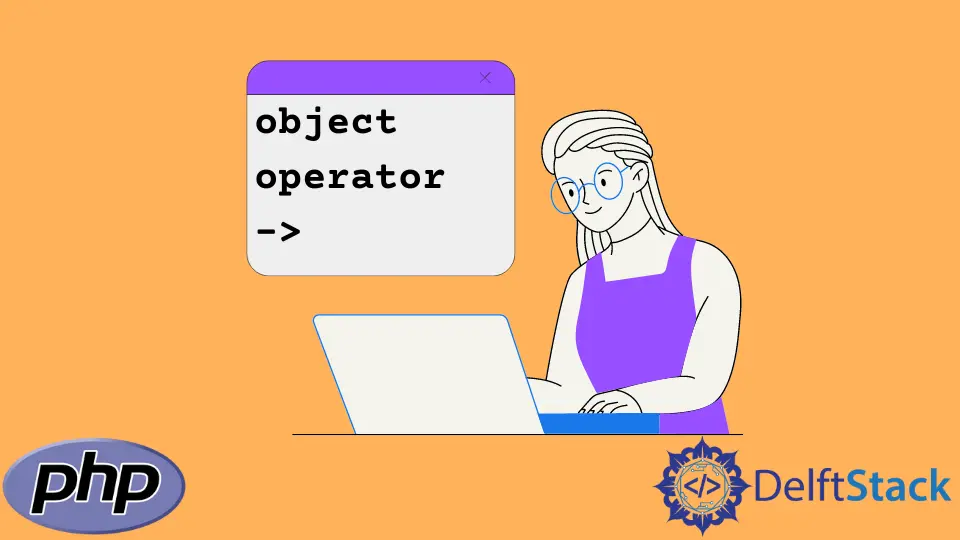Object Operator in PHP
- What is the Object Operator in PHP?
- Accessing Object Properties
- Calling Object Methods
- Conclusion
- FAQ

When diving into PHP programming, understanding the object operator (->) is essential for working with objects effectively. The object operator allows you to access properties and methods of an object, making it a cornerstone of object-oriented programming in PHP.
In this tutorial, we will explore how to use the object operator, its significance, and practical examples that illustrate its functionality. Whether you are a beginner or an experienced developer looking to brush up on your skills, this guide will provide the insights you need to leverage the power of the object operator in your PHP applications.
What is the Object Operator in PHP?
In PHP, the object operator (->) is used to access properties and methods of an object. When you create a class and instantiate it, you create an object. This object can contain attributes (properties) and functions (methods) that define its behavior. The object operator is crucial for interacting with these properties and methods, allowing you to manipulate object data seamlessly.
For example, consider a simple class called Car. You can define properties like color and methods like drive(). Using the object operator, you can access these elements easily.
Here’s a quick example:
class Car {
public $color;
public function drive() {
return "The car is driving.";
}
}
$myCar = new Car();
$myCar->color = "red";
echo $myCar->drive();
Output:
The car is driving.
In this example, we created a Car class with a property color and a method drive(). We then instantiated the class and accessed its properties and methods using the object operator.
Accessing Object Properties
One of the primary uses of the object operator is to access properties of an object. When you create an instance of a class, you can easily set or retrieve its properties using the object operator. This is particularly useful in scenarios where you want to manage data encapsulated within an object.
Consider the following example where we have a User class:
class User {
public $name;
public $age;
public function __construct($name, $age) {
$this->name = $name;
$this->age = $age;
}
}
$user1 = new User("Alice", 30);
echo "User Name: " . $user1->name . ", Age: " . $user1->age;
Output:
User Name: Alice, Age: 30
In this example, the User class has two properties: name and age. We created an instance of the class and accessed its properties using the object operator. The output clearly shows how we can retrieve the values stored in the object’s properties.
Accessing properties with the object operator is straightforward and efficient. It allows you to encapsulate data within objects while providing a clean interface for interaction.
Calling Object Methods
Another significant aspect of the object operator is its ability to call methods defined in a class. This is where the true power of object-oriented programming shines. By using the object operator, you can invoke methods that perform actions or computations based on the object’s data.
Let’s expand on our previous example by adding a method to the User class that introduces the user:
class User {
public $name;
public $age;
public function __construct($name, $age) {
$this->name = $name;
$this->age = $age;
}
public function introduce() {
return "Hi, I'm " . $this->name . " and I'm " . $this->age . " years old.";
}
}
$user1 = new User("Alice", 30);
echo $user1->introduce();
Output:
Hi, I'm Alice and I'm 30 years old.
In this example, we added an introduce() method to the User class. When we call this method using the object operator, it returns a string that introduces the user. This demonstrates how methods can utilize object properties to provide meaningful output.
Using the object operator to call methods is a fundamental practice in PHP. It allows you to create dynamic and interactive applications that respond to user input and other events.
Conclusion
The object operator (->) in PHP is a powerful tool for accessing properties and methods of objects. By understanding how to use this operator effectively, you can create well-structured, object-oriented applications that are easier to maintain and extend. Whether you’re accessing properties or calling methods, the object operator plays a crucial role in object-oriented programming in PHP. As you continue to develop your PHP skills, mastering the use of the object operator will enhance your ability to write clean and efficient code.
FAQ
-
what is the purpose of the object operator in PHP?
The object operator (->) is used to access properties and methods of an object in PHP. -
can I use the object operator with private properties?
Yes, you can access private properties through methods within the class, but not directly from outside the class.
-
what happens if I try to access a non-existing property using the object operator?
PHP will throw a notice indicating that the property does not exist, but the script will continue to execute. -
how do I define a method in a PHP class?
You define a method in a PHP class using thefunctionkeyword followed by the method name and parentheses. -
can I use the object operator with arrays in PHP?
No, the object operator is specifically for objects. To access array elements, you use square brackets.
Sheeraz is a Doctorate fellow in Computer Science at Northwestern Polytechnical University, Xian, China. He has 7 years of Software Development experience in AI, Web, Database, and Desktop technologies. He writes tutorials in Java, PHP, Python, GoLang, R, etc., to help beginners learn the field of Computer Science.
LinkedIn Facebook